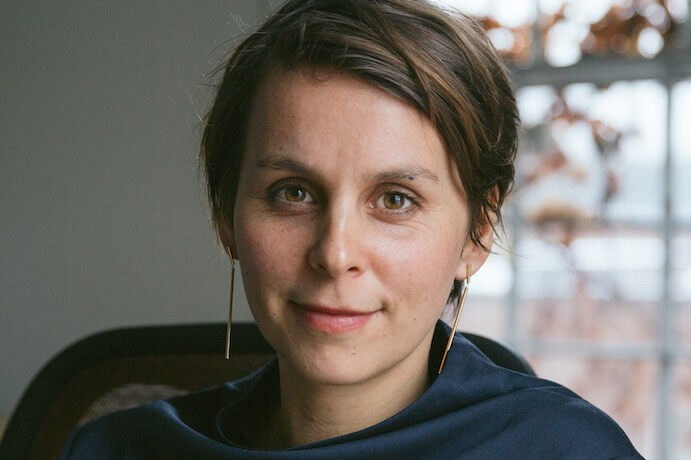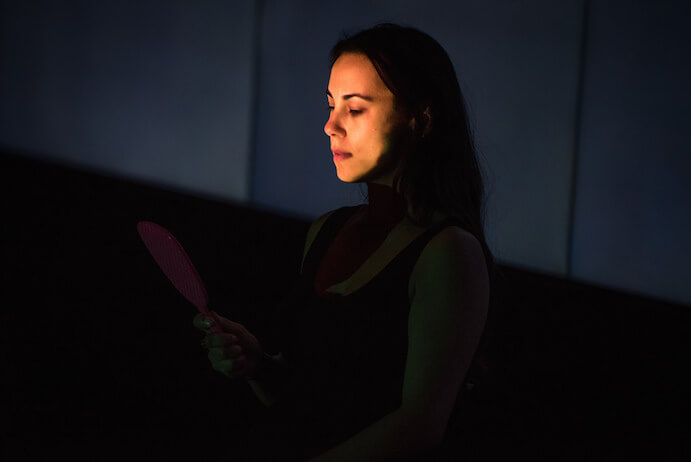On January 8, 2018, musicians from the New York Philharmonic traveled to Brooklyn’s National Sawdust for the first CONTACT! concert of the 2017–2018 season. CONTACT!, the Philharmonic’s new-music series, highlights contemporary composers in intimate venues, attempting to cater to the age-old desire for traditional classical institutions to present new music and perhaps engage a younger demographic. Yet the series, now in its ninth season, seems to be suffering from a lack of commitment, perhaps stemming from a less than energetic revival after its near suspension in 2016.
Conductor and composer Esa-Pekka Salonen served as impromptu host for the evening, guiding us through each of the five pieces, with the composers providing additional commentary. These conversations certainly proved insightful, if a bit forced at times. The program opened with Sarah Kirkland Snider’s Thread and Fray (2006), for viola, bass clarinet, and marimba. Over the course of this brief miniature, a unison melodic idea develops as repeated phrases build upon each other, unraveling and splintering. The muted warmth of this unusual instrumentation, particularly in moments of unison, provided a sense of comfort. This reassurance was unfortunately interrupted when the lack of unity in the performance made it difficult to hold onto the rhythmic pulse.
Ashley Fure’s Therefore I Was (2012) followed, where the struggle of living with Parkinson’s disease comes to life through an exploration of the sonic possibilities of the scordatura cello (C string tuned down to an F-sharp). Here, as Salonen described, “sounds become expressive objects themselves” as the cello’s sonorities are expanded in the timbres of the piano and percussion. Soft shrieks (akin to nails on a chalkboard), riotous pulsing, low rumbles, scrapes, and crashes were uttered seemingly without a rhythmically driven purpose, making the listening experience, perhaps intentionally, fraught with anxiety. However, the extremity of this aggression was juxtaposed with moments of quiet poise, where I sat with held breath, imagining the stoicism inherent in a condition that prevents muscular and neural systems from interacting successfully. Fure’s writing requires immense technical precision, which the performers executed with ease, but the musical tension also permeated the performance, which occasionally felt reserved and stiff.

Violinists Quan Ge and Shanshan Yao, violist Rémi Pelletier, and cellist Ru-Pei Yeh, however, delivered an engaging and passionate performance of Du Yun’s Tattooed in Snow (2015), a welcome contrast to the otherwise more distant ones. Du Yun’s work explores the fragility of art, particularly sand or snow sculptures. Out of soft whispers, a Renaissance-like chant emerges and coalesces into a four-voice madrigal. This delicate moment is interrupted as the edges begin to fray, giving way to faster moving passages. Du Yun describes the work as a having a narrative structure, though it sounded more episodic in nature. Insistent strumming coupled with a warm viola solo, and destructive cello scrapes against a high-pitched violin conversation, became chapters within a story that lacked a larger narrative arc. Lu Yang’s video, in a live-action Japanese anime style, accompanied the music, but still no apparent story took form. Nonetheless, Du Yun’s varied textures, layering of sounds, and reference to different styles, created captivating fleeting moments in time.
Fernanda Aoki Navarro’s Parthenogenesis (2012) intended to “show material in its fully developed form when it was introduced, eliminating the concept of development all together,” as well as utilizing a “democratic” structure where each performer played for the same amount of time. Despite her compelling description, the result was less than satisfying. This democratic approach led to what seemed like four instrumental solos with accompanying transitional material. The bass clarinet solo was anchored by squeaks and thumps, the piano’s utilized jazz-like runs, the cello’s paired a guitar-like strumming with quick unvoiced figures, and the trombone’s incorporated hushed low rumbles, sputtered wails, and slides. Perhaps due to the democratic design (still somewhat hierarchical given the presence of conductor Jeffrey Milarsky), occasionally all four performers played their own material, seemingly without regard to others, creating disparate overlapping textures where a single voice could not break through. Without any sense of the intimate or collaborative nature of chamber music, the audience felt removed from the experience.

The program concluded with Anna Thorvaldsdottir’s Ró (2013), where melody was created through texture—ephemeral rather than tonal material. The opening shimmer gave way to sustained strings punctured with feathery flutters, while the low dynamic quality and slow moving harmonic structure evoked an increasingly infinite landscape. As the program notes revealed, Thorvaldsdottir asks the performers to use extreme care and a sense of calm when playing sustained pitches. Individual performers took turns walking this tightrope: gently picking up a compact melodic line, as if coming into view one by one and exploring the desolate landscape. The sense of serenity never faded as we floated above this dormant expanse. The texture thinned until the bass flute sustained the final pitch, the last figure exiting the frame. The performance, though executed technically, felt emotionally withdrawn, and the conducted beat detracted from the sense of stasis.
The evening brought the works of five distinct voices to life through technically precise performances. Yet at times it seemed that an apathetic approach hindered the possibility for nuanced interpretation. The Philharmonic musicians are excellent orchestral performers and shine in their presentation of symphonic works for large halls. But for contemporary chamber music to thrive, an audience needs committed and convincing leaders to guide them through unfamiliar terrain. While the performers did not seem averse to tackling new work, they appeared somewhat uncomfortable, which in turn left me feeling uninspired. Venerable new-music ensembles play with a sense of openness, intimacy, and collaborative spirit, which was not evident in this performance. CONTACT! serves a real purpose, but with only two performances in the “series” this season, I wonder if the Philharmonic would be better off focusing their efforts on other ways to engage with contemporary music.
























